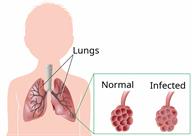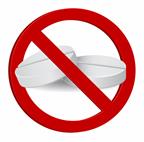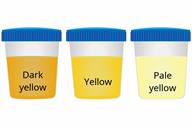Community-Acquired Pneumonia, Child

Pneumonia is a lung infection that causes inflammation and the buildup of mucus and fluids in the lungs. Community-acquired pneumonia is pneumonia that develops in people who are not, and have not recently been, in a hospital or other health care facility.
Usually, pneumonia in children develops as a result of an illness that is caused by a virus, such as the common cold and the flu (influenza). It can also be caused by bacteria. While the common cold and influenza can spread from person to person (are contagious), pneumonia itself is not considered contagious.
What are the causes?
This condition may be caused by:
What increases the risk?
Your child is more likely to develop pneumonia during the fall, winter, and spring. This is when children spend more time indoors and in close contact with others.
What are the signs or symptoms?
Symptoms depend on your child's age and the cause of the condition. If caused by a virus, the pneumonia may be mild, and symptoms may develop slowly. If the pneumonia is caused by bacteria, symptoms may develop quickly and may cause higher fever.
Common symptoms include:
A dry cough or a wet (productive) cough. Your child may continue to cough for several weeks after starting to feel better. Coughing helps to clear the infection.
A fever or chills.
- Breathing problems, such as:
Shortness of breath.
Fast or shallow breathing.
Making high-pitched whistling sounds when breathing, most often when breathing out (wheezing).
Nostrils opening wide during breathing (nasal flaring).
Pain in the chest or abdomen.
Tiredness (fatigue).
No desire to eat or lack of interest in play.
How is this diagnosed?
This condition may be diagnosed based on your child's medical history or a physical exam. Your child may also have tests, including:
How is this treated?
Treatment for this condition depends on the cause and how severe the symptoms are.
Follow these instructions at home:
Medicines

-
Give over-the-counter and prescription medicines only as told by your child's health care provider.
-
If your child was prescribed an antibiotic medicine, give it as told by your child's health care provider. Do not stop giving the antibiotic even if your child starts to feel better.
-
Do not give your child aspirin because of the association with Reye's syndrome.
- If your child is 4–6 years old, use cough medicine only as directed by the health care provider.
Coughing helps to clear mucus and germs from the nose, throat, windpipe, and lungs (respiratory system). Give your child cough medicine only to help your child rest or sleep.
Do not give cough medicine to your child who is younger than 4 years of age.
Activity
-
Be sure your child gets enough rest. Your child may be tired and may not want to do as many activities as usual.
-
Have your child return to their normal activities as told by your child's health care provider. Ask the health care provider what activities are safe for your child.
General instructions

-
Have your child sleep in a partly upright position. Place a few pillows under your child's head or have your child sleep in a reclining chair. Lying down makes coughing worse.
- Loosen your child's mucus in their lungs:
-
Wash your hands with soap and water for at least 20 seconds before and after having contact with your child. If soap and water are not available, use hand sanitizer. Ask other people in your household to wash their hands often, too.
-
Keep your child away from secondhand smoke. Smoke can make your child's cough and other symptoms worse.
-
Have your child eat a healthy diet. This includes plenty of vegetables, fruits, whole grains, low-fat dairy products, and lean protein.
-
Keep all follow-up visits.
Contact a health care provider if:
- Your child has signs of breathing problems, such as:
Fast breathing.
Being short of breath and unable to talk normally, or making grunting noises when breathing out.
Pain with breathing.
Wheezing.
Ribs that seem to stick out when your child breathes.
Nasal flaring.
-
Your child is younger than 3 months and has a temperature of 100.4°F (38°C) or higher.
-
Your child is 3 months to 3 years old and has a temperature of 102.2°F (39°C) or higher.
-
Your child coughs up blood.
-
Your child vomits often.
-
Your child has any symptoms that suddenly get worse.
-
Your child develops a bluish color to the lips, face, or nails.
These symptoms may be an emergency. Do not wait to see if the symptoms will go away. Get help right away. Call 911.
Summary
-
Community-acquired pneumonia is pneumonia that develops in people who are not, and have not recently been, in a hospital or other health care facility. It may be caused by bacteria or viruses.
-
Treatment for this condition depends on the cause and how severe the symptoms are.
-
Contact a health care provider if your child develops new symptoms or has symptoms that do not get better after 3 days of treatment, or as told by your child's health care provider.
This information is not intended to replace advice given to you by your health care provider. Make sure you discuss any questions you have with your health care provider.


